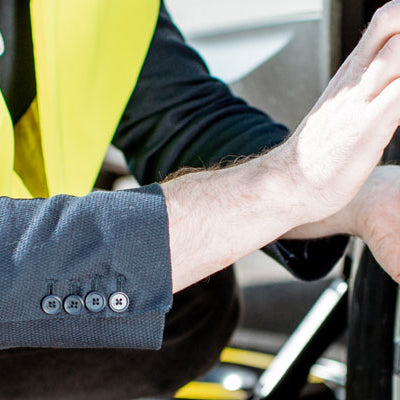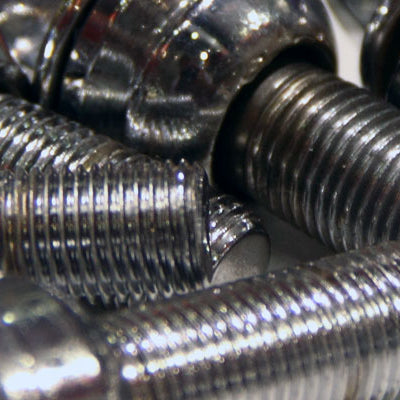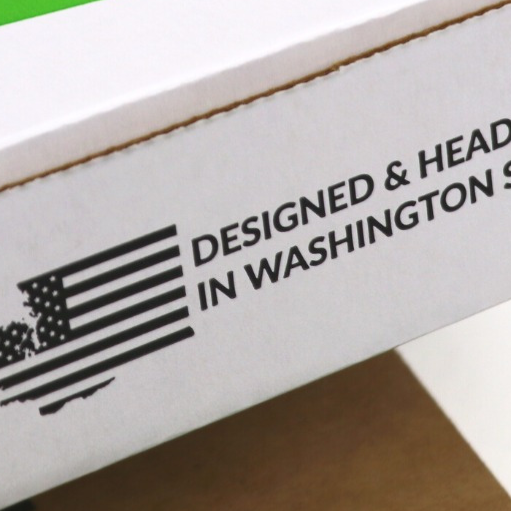
Lug Nuts by Vehicle – Perfect Fit for Your Make & Model
-
 Sale
Sale
DPAccessories Lug Nuts Compatible with 2013-2019 Ford Escape
DP-Accessories$38.00 - $40.00DPAccessories wheel accessories are durable, reliable, and safe. When you're buying a part that holds your wheels on, you want to be sure it perfor...
View full details -
 Sale
Sale
DPAccessories Lug Nuts Compatible with 1988-1998 Chevrolet K1500
DP-Accessories$47.00 - $48.00Compatible with 1988, 1989, 1990, 1991, 1992, 1993, 1994, 1995, 1996, 1997, 1998 Chevrolet K1500 - DPAccessories wheel accessories are durable, rel...
View full details -
 Sale
Sale
DPAccessories Lug Nuts Compatible with 2005-2021 Nissan Frontier
DP-Accessories$41.00 - $42.00Compatible with 2005, 2006, 2007, 2008, 2009, 2010, 2011, 2012, 2013, 2014, 2015, 2016, 2017, 2018, 2019, 2020, 2021 Nissan Frontier - DPAccessorie...
View full details -
 Sale
Sale
DPAccessories Lug Nuts Compatible with 2012-2015 Honda Civic
DP-Accessories$40.00 - $46.00Compatible with 2012, 2013, 2014, 2015 Honda Civic - DPAccessories wheel accessories are durable, reliable, and safe - When buying a part that hold...
View full details -
 Sale
Sale
DPAccessories Lug Nuts Compatible with 2005-2015 Toyota Tacoma
DP-Accessories$41.00 - $62.00Compatible with 2005, 2006, 2007, 2008, 2009, 2010, 2011, 2012, 2013, 2014, 2015 Toyota Tacoma 6-Lug - DPAccessories wheel accessories are durable,...
View full details -
 Sale
Sale
DPAccessories Lug Nuts Compatible with 2012-2018 Ford Focus
DP-Accessories$38.00 - $40.00DPAccessories wheel accessories are durable, reliable, and safe. When you're buying a part that holds your wheels on, you want to be sure it perfor...
View full details -
 Sale
Sale
DPAccessories Lug Nuts Compatible with 2015-2024 Ford F-150
DP-Accessories$47.00 - $83.00DPAccessories wheel accessories are durable, reliable, and safe. When you're buying a part that holds your wheels on, you want to be sure it perfor...
View full details -
 Sale
Sale
DPAccessories Lug Nuts Compatible with 1992-1997 Ford F-350
DP-Accessories$52.00 - $54.00Compatible with 1992, 1993, 1994, 1995, 1996, 1997 Ford F-350 - DPAccessories wheel accessories are durable, reliable, and safe - When buying a par...
View full details -
 Sale
Sale
DPAccessories Lug Nuts Compatible with 2013-2019 Cadillac XTS
DP-Accessories$41.00 - $50.00Compatible with 2013, 2014, 2015, 2016, 2017, 2018, 2019 Cadillac XTS - DPAccessories wheel accessories are durable, reliable, and safe - When buyi...
View full details -
 Sale
Sale
DPAccessories Lug Nuts Compatible with 2016-2020 Cadillac CT6
DP-Accessories$41.00 - $50.00Compatible with 2016, 2017, 2018, 2019, 2020 Cadillac CT6 - DPAccessories wheel accessories are durable, reliable, and safe - When buying a part th...
View full details -
 Sale
Sale
DPAccessories Lug Nuts Compatible with 2011-2024 Dodge Durango
DP-Accessories$44.00 - $45.00Compatible with 2011, 2012, 2013, 2014, 2015, 2016, 2017, 2018, 2019, 2020, 2021, 2022, 2023, 2024 Dodge Durango - DPAccessories wheel accessories ...
View full details -
 Sale
Sale
DPAccessories Lug Nuts Compatible with 2001-2006 GMC Sierra 1500 HD
DP-Accessories$52.00 - $54.00Compatible with 2001, 2002, 2003, 2004, 2005, 2006 GMC Sierra 1500 HD - DPAccessories wheel accessories are durable, reliable, and safe - When buyi...
View full details -
 Sale
Sale
DPAccessories Lug Nuts Compatible with 2012-2018 Toyota Prius V
DP-Accessories$40.00 - $49.00Compatible with 2012, 2013, 2014, 2015, 2016, 2017, 2018 Toyota Prius V - DPAccessories wheel accessories are durable, reliable, and safe - When bu...
View full details -
 Save 27%
Save 27%
DPAccessories Lug Nuts Compatible with 1982-1992 Pontiac Firebird
DP-Accessories$40.00Original price $55.00Compatible with 1982, 1983, 1984, 1985, 1986, 1987, 1988, 1989, 1990, 1991, 1992 Pontiac Firebird - DPAccessories wheel accessories are durable, re...
View full details -
 Sale
Sale
DPAccessories Lug Nuts Compatible with 2016-2020 Lexus IS300
DP-Accessories$40.00 - $49.00Compatible with 2016, 2017, 2018, 2019, 2020 Lexus IS300 - DPAccessories wheel accessories are durable, reliable, and safe - When buying a part tha...
View full details -
 Save 27%
Save 27%
DPAccessories Lug Nuts Compatible with 2016-2024 Jaguar XF
DP-Accessories$40.00Original price $55.00Compatible with 2016, 2017, 2018, 2019, 2020, 2021, 2022, 2023, 2024 Jaguar XF - DPAccessories wheel accessories are durable, reliable, and safe - ...
View full details -
 Save 27%
Save 27%
DPAccessories Lug Nuts Compatible with 2022-2024 Hyundai Elantra N
DP-Accessories$40.00Original price $55.00Compatible with 2022, 2023, 2024 Hyundai Elantra N - DPAccessories wheel accessories are durable, reliable, and safe - When buying a part that hold...
View full details -
 Sale
Sale
DPAccessories Lug Nuts Compatible with 2017-2024 Chrysler Pacifica
DP-Accessories$40.00 - $48.00Compatible with 2017, 2018, 2019, 2020, 2021, 2022, 2023, 2024 Chrysler Pacifica - DPAccessories wheel accessories are durable, reliable, and safe ...
View full details -
 Sale
Sale
DPAccessories Lug Nuts Compatible with 1992-2002 Isuzu Trooper
DP-Accessories$41.00 - $52.00Compatible with 1992, 1993, 1994, 1995, 1996, 1997, 1998, 1999, 2000, 2001, 2002 Isuzu Trooper - DPAccessories wheel accessories are durable, relia...
View full details -
 Sale
Sale
DPAccessories Lug Nuts Compatible with 2004-2007 Cadillac CTS-V
DP-Accessories$41.00 - $42.00Compatible with 2004, 2005, 2006, 2007 Cadillac CTS-V - DPAccessories wheel accessories are durable, reliable, and safe - When buying a part that h...
View full details -
 Sale
Sale
DPAccessories Lug Nuts Compatible with 1992-1995 Honda Civic
DP-Accessories$38.00 - $42.00Compatible with 1992, 1993, 1994, 1995 Honda Civic - DPAccessories wheel accessories are durable, reliable, and safe - When buying a part that hold...
View full details -
 Sale
Sale
DPAccessories Lug Nuts Compatible with 2012-2018 Ram 1500
DP-Accessories$44.00 - $45.00DPAccessories wheel accessories are durable, reliable, and safe. When you're buying a part that holds your wheels on, you want to be sure it perfor...
View full details -
 Sale
Sale
DPAccessories Lug Nuts Compatible with 2021-2024 Jeep Grand Cherokee
DP-Accessories$44.00 - $45.00DPAccessories wheel accessories are durable, reliable, and safe. When you're buying a part that holds your wheels on, you want to be sure it perfor...
View full details -
 Sale
Sale
DPAccessories Lug Nuts Compatible with 2004-2014 Ford F-150
DP-Accessories$47.00 - $101.00DPAccessories wheel accessories are durable, reliable, and safe. When you're buying a part that holds your wheels on, you want to be sure it perfor...
View full details -
 Sold out
Sold out
DPAccessories Lug Nuts Compatible with 2024-2025 INEOS Grenadier
DP-Accessories$49.00 - $50.00Compatible with 2024, 2025 INEOS Grenadier - DPAccessories wheel accessories are durable, reliable, and safe - When buying a part that holds your w...
View full details
Factory/OEM Style Lug Nuts – A Premium Upgrade
-
 Sale
Sale
DPAccessories Lug Nuts | Compatible Replacement for Toyota-Lexus | 90084-94001, 90942-A1009, 90942-01033 | Factory/OEM Wheels Only
DP-Accessories$20.00 - $411.00OE REPLACEMENTCompatible replacement for Toyota-Lexus 90084-94001, 90942-A1009, 90942-01033 - DPAccessories wheel lug nuts are durable, reliable, and safe - When...
View full details -
 Sale
Sale
DPAccessories Lug Nuts - Compatible Replacement for Chevrolet-GMC - 9595175, 9591772, 9598178
DP-Accessories$18.00 - $339.00OE REPLACEMENTCompatible replacement for Chevrolet-GMC 9595175, 9591772, 9598178 - DPAccessories wheel lug nuts are durable, reliable, and safe - When buying a p...
View full details -
 Sale
Sale
DPAccessories Lug Nuts - Compatible Replacement for Porsche - N-020-112-1, 900-182-001-01
DP-Accessories$16.00 - $264.00OE REPLACEMENTCompatible replacement for Porsche N-020-112-1, 900-182-001-01 - DPAccessories wheel lug nuts are durable, reliable, and safe - When buying a part ...
View full details -
 Sale
Sale
DPAccessories Lug Nuts - Compatible Replacement for Chevrolet-Buick-GM - 9594683, 10028615, 10091792
DP-Accessories$17.00 - $414.00OE REPLACEMENTCompatible replacement for Chevrolet-Buick-GM 9594683, 10028615, 10091792 - DPAccessories wheel lug nuts are durable, reliable, and safe - When buy...
View full details -
 Sale
Sale
DPAccessories Lug Nuts | Compatible Replacement for Ford-Lincoln | ACPZ-1012-B | Factory/OEM Wheels Only
DP-Accessories$24.00 - $686.00OE REPLACEMENTCompatible replacement for Ford-Lincoln ACPZ-1012-B - DPAccessories wheel lug nuts are durable, reliable, and safe - When buying a part that holds ...
View full details -
 Sale
Sale
DPAccessories Lug Nuts | Compatible Replacement for Dodge-Jeep-RAM | 6509422AA | Factory/OEM Wheels Only
DP-Accessories$25.00 - $686.00OE REPLACEMENTCompatible replacement for Dodge-Jeep-RAM 6509422AA - DPAccessories wheel lug nuts are durable, reliable, and safe - When buying a part that holds ...
View full details -
 Sale
Sale
DPAccessories Lug Nuts | Compatible Replacement for Honda | 90304-634-000 | Factory/OEM Wheels Only
DP-Accessories$17.00 - $434.00OE REPLACEMENTCompatible replacement for Honda 90304-634-000 - DPAccessories wheel lug nuts are durable, reliable, and safe - When buying a part that holds your ...
View full details -
 Sale
Sale
DPAccessories Lug Nuts | Compatible Replacement for Suzuki-GM | 09159-12024, 96057636 | Factory/OEM Wheels Only
DP-Accessories$17.00 - $434.00OE REPLACEMENTCompatible replacement for Suzuki-GM 09159-12024, 96057636 - DPAccessories wheel lug nuts are durable, reliable, and safe - When buying a part that...
View full details -
 Sale
Sale
DPAccessories Lug Nuts | Compatible Replacement for Toyota-Scion | SU003-10733, SU003-00765, SU003-04733 | Factory/OEM Wheels Only
DP-Accessories$17.00 - $434.00OE REPLACEMENTCompatible replacement for Toyota-Scion SU003-10733, SU003-00765, SU003-04733 - DPAccessories wheel lug nuts are durable, reliable, and safe - When...
View full details -
 Sale
Sale
DPAccessories Lug Nuts | Compatible Replacement for Subaru | 28171AJ001, 28171AG000, 28171AJ000 | Factory/OEM Wheels Only
DP-Accessories$17.00 - $434.00OE REPLACEMENTCompatible replacement for Subaru 28171AJ001, 28171AG000, 28171AJ000 - DPAccessories wheel lug nuts are durable, reliable, and safe - When buying a...
View full details -
 Sale
Sale
DPAccessories Lug Nuts | Compatible Replacement for Honda-Acura | 90381-S87-A01, 90304-SA5-013 | Factory/OEM Wheels Only
DP-Accessories$18.00 - $550.00OE REPLACEMENTCompatible replacement for Honda-Acura 90381-S87-A01, 90304-SA5-013 - DPAccessories wheel lug nuts are durable, reliable, and safe - When buying a ...
View full details -
 Sale
Sale
DPAccessories Lug Nuts | Compatible Replacement for Toyota-Lexus | 90942-01058, 90080-17036, 90942-A1011 | Factory/OEM Wheels Only
DP-Accessories$22.00 - $428.00OE REPLACEMENTCompatible replacement for Toyota-Lexus 90942-01058, 90080-17036, 90942-A1011 - DPAccessories wheel lug nuts are durable, reliable, and safe - When...
View full details -
 Sale
Sale
DPAccessories Lug Nuts | Compatible Replacement for Mitsubishi | MR455707, MB579290 | Factory/OEM Wheels Only
DP-Accessories$20.00 - $411.00OE REPLACEMENTCompatible replacement for Mitsubishi MR455707, MB579290 - DPAccessories wheel lug nuts are durable, reliable, and safe - When buying a part that h...
View full details -
 Sale
Sale
DPAccessories Lug Nuts | Compatible Replacement for Hyundai-Kia-Genesis | 5295037000 | Factory/OEM Wheels Only
DP-Accessories$20.00 - $411.00OE REPLACEMENTCompatible replacement for Hyundai-Kia-Genesis 5295037000 - DPAccessories wheel lug nuts are durable, reliable, and safe - When buying a part that ...
View full details -
 Sale
Sale
DPAccessories Lug Nuts | Compatible Replacement for Chevrolet-Pontiac | 88972745, 94843999 | Factory/OEM Wheels Only
DP-Accessories$20.00 - $411.00OE REPLACEMENTCompatible replacement for Chevrolet-Pontiac 88972745, 94843999 - DPAccessories wheel lug nuts are durable, reliable, and safe - When buying a part...
View full details -
 Sale
Sale
DPAccessories Lug Nuts | Compatible Replacement for Dodge-Chrysler | 6509873AA | Factory/OEM Wheels Only
DP-Accessories$25.00 - $686.00OE REPLACEMENTCompatible replacement for Dodge-Chrysler 6509873AA - DPAccessories wheel lug nuts are durable, reliable, and safe - When buying a part that holds ...
View full details -
 Sale
Sale
DPAccessories Lug Nuts | Compatible Replacement for Chevrolet-Cadillac-Buick | 9597846, 9598179 | Factory/OEM Wheels Only
DP-Accessories$25.00 - $686.00OE REPLACEMENTCompatible replacement for Chevrolet-Cadillac-Buick 9597846, 9598179 - DPAccessories wheel lug nuts are durable, reliable, and safe - When buying a...
View full details -
 Sale
Sale
DPAccessories Lug Nuts | Compatible Replacement for Jaguar | T4A2670 | Factory/OEM Wheels Only
DP-Accessories$23.00 - $686.00OE REPLACEMENTCompatible replacement for Jaguar T4A2670 - DPAccessories wheel lug nuts are durable, reliable, and safe - When buying a part that holds your wheel...
View full details -
 Sale
Sale
DPAccessories Lug Nuts | Compatible Replacement for Land Rover-Range Rover | 605123499, LR001381, LR043267 | Factory/OEM Wheels Only
DP-Accessories$23.00 - $686.00OE REPLACEMENTCompatible replacement for Land Rover-Range Rover 605123499, LR001381, LR043267 - DPAccessories wheel lug nuts are durable, reliable, and safe - Wh...
View full details -
 Sale
Sale
DPAccessories Lug Nuts | Compatible Replacement for Ford-Lincoln | ACPZ-1012-M | Factory/OEM Wheels Only
DP-Accessories$23.00 - $686.00OE REPLACEMENTCompatible replacement for Ford-Lincoln ACPZ-1012-M - DPAccessories wheel lug nuts are durable, reliable, and safe - When buying a part that holds ...
View full details -
 Sale
Sale
DPAccessories Lug Nuts | Compatible Replacement for Dodge-Chrysler | 6507826AA | Factory/OEM Wheels Only
DP-Accessories$23.00 - $686.00OE REPLACEMENTCompatible replacement for Dodge-Chrysler 6507826AA - DPAccessories wheel lug nuts are durable, reliable, and safe - When buying a part that holds ...
View full details -
 Sale
Sale
DPAccessories Lug Nuts | Compatible Replacement for Isuzu-Honda-GM | 8-94231-230-4, 8-97229-212-0, 94101242 | Factory/OEM Wheels Only
DP-Accessories$19.00 - $387.00OE REPLACEMENTCompatible replacement for Isuzu-Honda-GM 8-94231-230-4, 8-97229-212-0, 94101242 - DPAccessories wheel lug nuts are durable, reliable, and safe - W...
View full details -
 Sale
Sale
DPAccessories Lug Nuts | Compatible Replacement for Chrysler-Dodge-Jeep | 6509769AA, 6500294, 6502738 | Factory/OEM Wheels Only
DP-Accessories$19.00 - $387.00OE REPLACEMENTCompatible replacement for Chrysler-Dodge-Jeep 6509769AA, 6500294, 6502738 - DPAccessories wheel lug nuts are durable, reliable, and safe - When bu...
View full details -
 Sale
Sale
DPAccessories Lug Nuts | Compatible Replacement for Volvo | 31329645, 31317466 | Factory/OEM Wheels Only
DP-Accessories$19.00 - $387.00OE REPLACEMENTCompatible replacement for Volvo 31329645, 31317466 - DPAccessories wheel lug nuts are durable, reliable, and safe - When buying a part that holds ...
View full details -
 Sale
Sale
DPAccessories Lug Nuts | Compatible Replacement for Volkswagen | 7B0601141, 7B0601143A | Factory/OEM Wheels Only
DP-Accessories$19.00 - $387.00OE REPLACEMENTCompatible replacement for Volkswagen 7B0601141, 7B0601143A - DPAccessories wheel lug nuts are durable, reliable, and safe - When buying a part tha...
View full details
Need a little help? Check out our helpful guides.
-
 Get on the road and driving in no time! Our four essential tips to lug nut, lug bolt, and wheel lock fitment will help ensure a safe and proper fitment.Read now
Get on the road and driving in no time! Our four essential tips to lug nut, lug bolt, and wheel lock fitment will help ensure a safe and proper fitment.Read now -

How to Install Lug Bolts
It takes only minutes to install new lug bolts on your vehicle but they'll probably be on there for quite some time. To make those miles as safe and pleasant as possible, correct fitment and proper installation is vital.Read now -

How to Install Lug Nuts
Read nowIt takes only minutes to install new lug nuts on your vehicle but they'll probably be on there for quite some time. To make those miles as safe and pleasant as possible, correct fitment and proper installation is vital.




























































